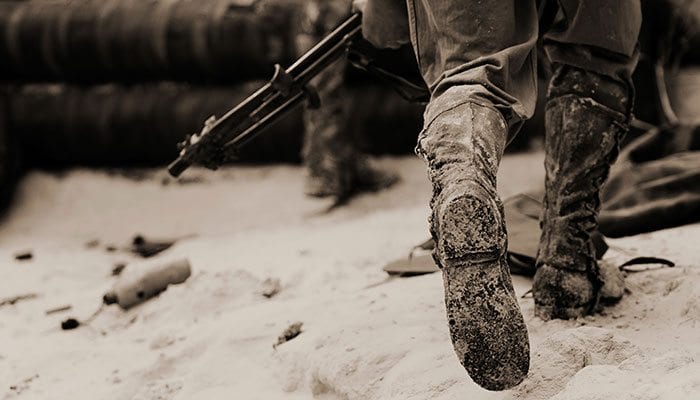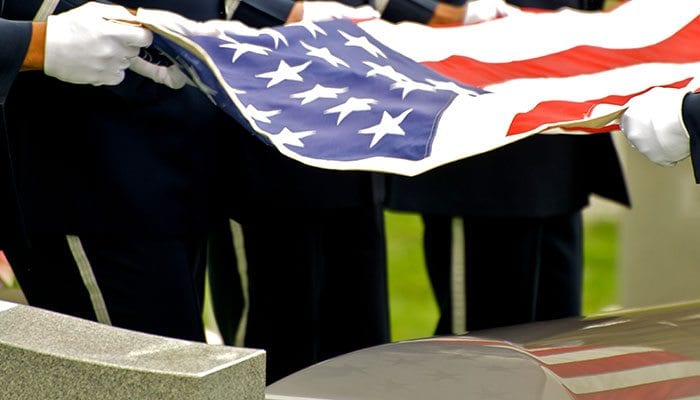Memorial Day, for many Americans, is a time of parades and marching bands, colorful banners, and family barbeques. More than just a festivity, Memorial Day is a time to reflect on the sacrifices of our nation’s military men and women. It is when we are asked to look at the high cost of war, and to recognize the bravery of all of those who paid that cost, freely, on the nation’s behalf.
Yet, not all casualties occur on the battlefield and many continue long after a war has ended. In America, asbestos-related diseases claim about 3,200 veterans every year – they comprise a full 33 percent of all mesothelioma victims. This is startling considering that all living veterans combined make up less than 10 percent of the country’s population. Of those service members, the branch of service hit hardest is the Navy.
In honor of those who labored inside of the battleships and submarines that have protected American shores and carried American troops to battlefields close and far, it’s important to trace a brief history of asbestos use in the Navy. These men and women have built the world’s finest fleet and they’ve done so despite dying in droves at the hands of corporate negligence and greed.
The Current Asbestos Epidemic Started in World War II
As early as 1922 the U.S. Navy needed thousands of tons of asbestos insulation for its submarines and ships. As World War II loomed, and battleship engines became more powerful (and as a result, hotter), the Navy needed increased fire-proofing. Along with insulating engines, the U.S. used asbestos as a flame-resistant shield to protect against horrific new weapons like fire-bombs.
The national asbestos supply skyrocketed. Between 1932 and 1937, the amount of asbestos imported by America more than tripled to 633 million pounds. By the end of World War II and the beginning of the Cold War, it had more than doubled once again to 1.4 billion pounds.
Despite the growing demand for asbestos, numerous medical reports throughout the late 30s and early 40s recommended that supervisors issue protective gear to shipyard workers and practice dust-reducing safety protocols like wetting asbestos before handling it. These recommendations were rarely followed, and, as a result, Naval personnel continued to toil under poor conditions.
Senior officials in the U.S. military were aware of the problem, but slow to offer help. In 1941, the U.S. Surgeon General of the Navy wrote in a confidential memo, “ I am certain that we are not protecting the men as we should [from asbestos exposure].” Though the Navy did eventually improve its safety measures, the Surgeon General’s remarks are still a haunting reminder of what troops endured 70 years ago and what they’ve been enduring up to this very day.
Memos Prove Corporate Manufacturer’s Lied to Veterans and the U.S. Military about Asbestos to Make Money
While the Navy was slow to help veterans, it ultimately wasn’t responsible for the huge number of deaths caused by asbestos. Military scientists and researchers were doing their best to study the mineral fiber, but didn’t understand the full extent of its dangers.
By contrast, asbestos-product manufacturers like Johns-Manville (JM) knew exactly how dangerous their goods were, but sold them anyway. JM was, for nearly a century, the largest corporate manufacturer of asbestos products in the United States. It supplied the Navy, as well as other military branches, with insulation and construction materials.
Internal memos written by the company’s executives acknowledge that JM knew about the dangers of asbestos as early as 1934, at the same time or even earlier than the military was discovering its risks. A high-level executive within the corporation admitted that anyone who found those memos could reasonably consider them "evidence of a corporate conspiracy to prevent asbestos workers from learning that their exposure to asbestos could kill them."
After a Conspiracy that Sickened Thousands, Corporations Try to Make the Government Pay for Damages
A conspiracy crime against America’s veterans is exactly what JM committed; however, it took decades for the corporation’s lies to be exposed. Yet, even after more than 10,000 Naval shipyard workers filed lawsuits against JM for knowingly exposing them to asbestos, the company tried to pass the blame onto the government.
In a bizarre turn of events, JM sued the U.S. Navy for the very same things for which veterans were suing JM. That is, JM claimed that the U.S. Navy knew all along that shipyard workers were being exposed to asbestos and that senior Naval officials knew about the health risks associated with asbestos-exposure. But the truth was that the Manville Corporation hid many details, even from the Navy. The goal of the lawsuit was for JM to hand off its 10,000 plus lawsuits back onto the military and, by extension, the taxpayers.
If JM’s sickening attempt at a counter-lawsuit had succeeded, American taxpayers, including those 10,000 sick veterans, would have essentially footed the bill for Johns Manville’s greed and negligence. Fortunately, this heartless and cowardly move didn’t work.
Today, Asbestos-Related Disease Are Like a Global Virus
While World War II saw the highest concentrations of asbestos being used, the epidemic is far from over. After the war, Navy ships continued to use asbestos for decades so that nearly every Navy ship built between the 1930s and 1970s contained at least some asbestos products.
The problem is arguably even more dangerous now, as we live in a globalized economy where an epidemic in one country is quickly transplanted to another. Often the U.S. Navy sends decommissioned ships off to India and Pakistan to be broken down for cheap. Indian “shipbreakers” are then exposed to the 50-year-old asbestos fibers which will cover their skin and clothes. When those workers go home, their children will also be exposed, and diseases like mesothelioma will continue on for another generation.
In this way, asbestos spreads from one country and one generation to the next, not unlike a plague.
Even in 2016, Military Men and Women Still Need Protection from Exposure
Despite all of the advances in technology and medical science, asbestos continues to crop up in new places, afflicting military men and women to this day. In May of 2016, researchers at the Centre for Research on Globalization discovered that Kadena Air Base in Okinawa, Japan presents a huge health risk to its 20,000 American service members, not to mention the nearly 200,000 Japanese civilians living nearby.
Kadena Air Base is the United States’ largest Air Force installation in all of Asia. Surveys recently made public the news that mess halls, boiler rooms, and even sleeping quarters on the base have suffered "serious contamination" from asbestos. Inspectors even found entire chunks of ripped-out asbestos scattered openly on the ground.
During training exercises, military personnel were ordered to cut through asbestos-filled doors with axes and chainsaws. These exercise drills spread asbestos dust and even chunks of friable asbestos across an area nearly 1,500 square feet in size. It’s unfortunately no surprise that long-time workers at the base are already showing symptoms of respiratory problems, including lung disease.
U.S. Veterans Should Be Honored with Better Treatment
Normally Memorial Day is a time to reflect on those lost in the past, but when it comes to asbestos exposure, veterans and active service members alike are still at risk. It’s time now for the nation not just to look back, but to gaze ahead and demand fair treatment in the future for its sick and wounded veterans. Helping our heroes before they are lost is perhaps the greatest tribute of all.

